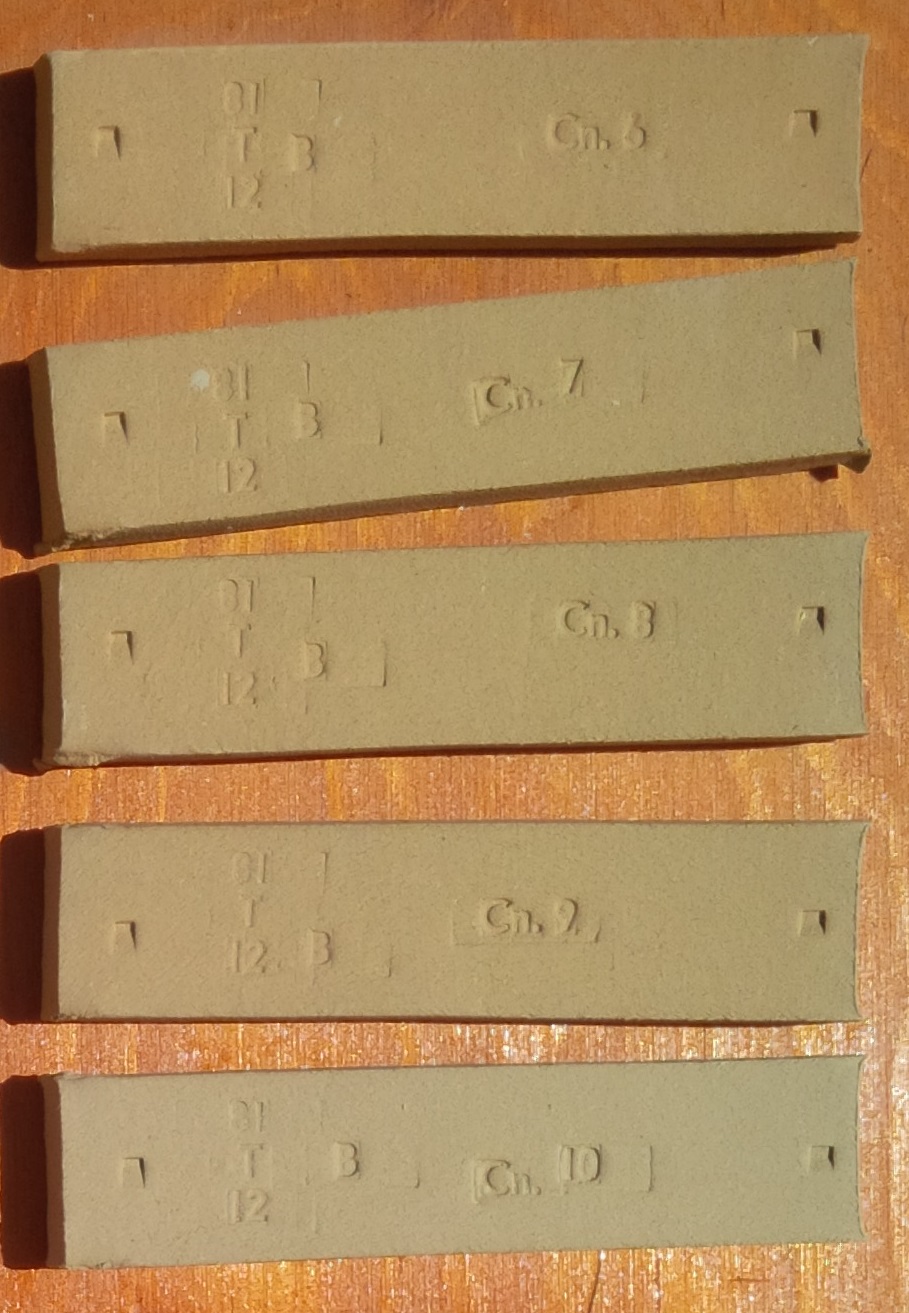| Monthly Tech-Tip | No tracking! No ads! | |
Jordan Fireclay
Alternate Names: Maryland Ball/Stoneware Clay
Description: Low Iron Fireclay
| Oxide | Analysis | Formula | Tolerance |
|---|---|---|---|
| CaO | 0.20% | 0.02 | |
| K2O | 1.99% | 0.11 | |
| MgO | 0.50% | 0.06 | |
| Na2O | 0.20% | 0.02 | |
| TiO2 | 1.20% | 0.08 | |
| Al2O3 | 20.18% | 1.00 | |
| SiO2 | 67.23% | 5.65 | |
| Fe2O3 | 1.71% | 0.05 | |
| LOI | 6.78% | n/a | |
| Oxide Weight | 471.13 | ||
| Formula Weight | 505.40 | ||
Notes
A popular raw material for pottery clay bodies for many years. There is some confusion about the claimed physical properties of this material (the chemistry and firing absorption and shrinkage do not match with our own testing of the material). We found that by itself it has a drying shrinkage of more that 7%, which is a little too high for typical pottery clay bodies. We found it had excellent drying properties in spite of the high shrinkage (it scored A000 on the DFAC test). It had a 1% fired porosity at cone 6 and reached zero % around cone 7. It should be possible to make a pottery clay from Jordan fireclay as 100% of the mix and it should be serviceable around cone 5 to give some margin for error of over firing. However adding 25% kaolin should improve it somewhat, reducing shrinkage and increasing the maturing range to cone 6.
This material is known to contain natural feldspar fluxes, this resists the growth of cristobalite during firing, thus resisting shivering and thermal shock failure. Strangely, the chemistry from the manufacturer does not suggest this either.
Related Information
Jordan Fireclay fired test bars

This picture has its own page with more detail, click here to see it.
Cone 6 to 10 oxidation (top to bottom) fired shrinkage and porosity testing bars.
Links
| Materials |
Fireclay
|
| Typecodes |
Clay Other
Clays that are not kaolins, ball clays or bentonites. For example, stoneware clays are mixtures of all of the above plus quartz, feldspar, mica and other minerals. There are also many clays that have high plasticity like bentonite but are much different mineralogically. |
| Typecodes |
Fireclay
Fireclays are non-kaolin non-ball clay materials similar to stoneware clays but lacking fluxing oxides. Many fireclays have a PCE of 28 or more. |
Data
| Firing Shrinkage | Cone 1: 5.2% Cone 5: 6.7% |
|---|---|
| Frit Softening Point | 3020F |
| Ultimate Particle Size Distribution | 10 microns: 61.5% 5: 51.5% 2: 40% 1: 31.5% 0.5: 22.5% |
| Pyrometric Cone Equivalent | 26-27 |
| Water absorption | Cone 1: 6.6% Cone 5: 3.4% |
| By Tony Hansen Follow me on        |  |
Got a Question?
Buy me a coffee and we can talk

https://backup.digitalfire.com, All Rights Reserved
Privacy Policy
